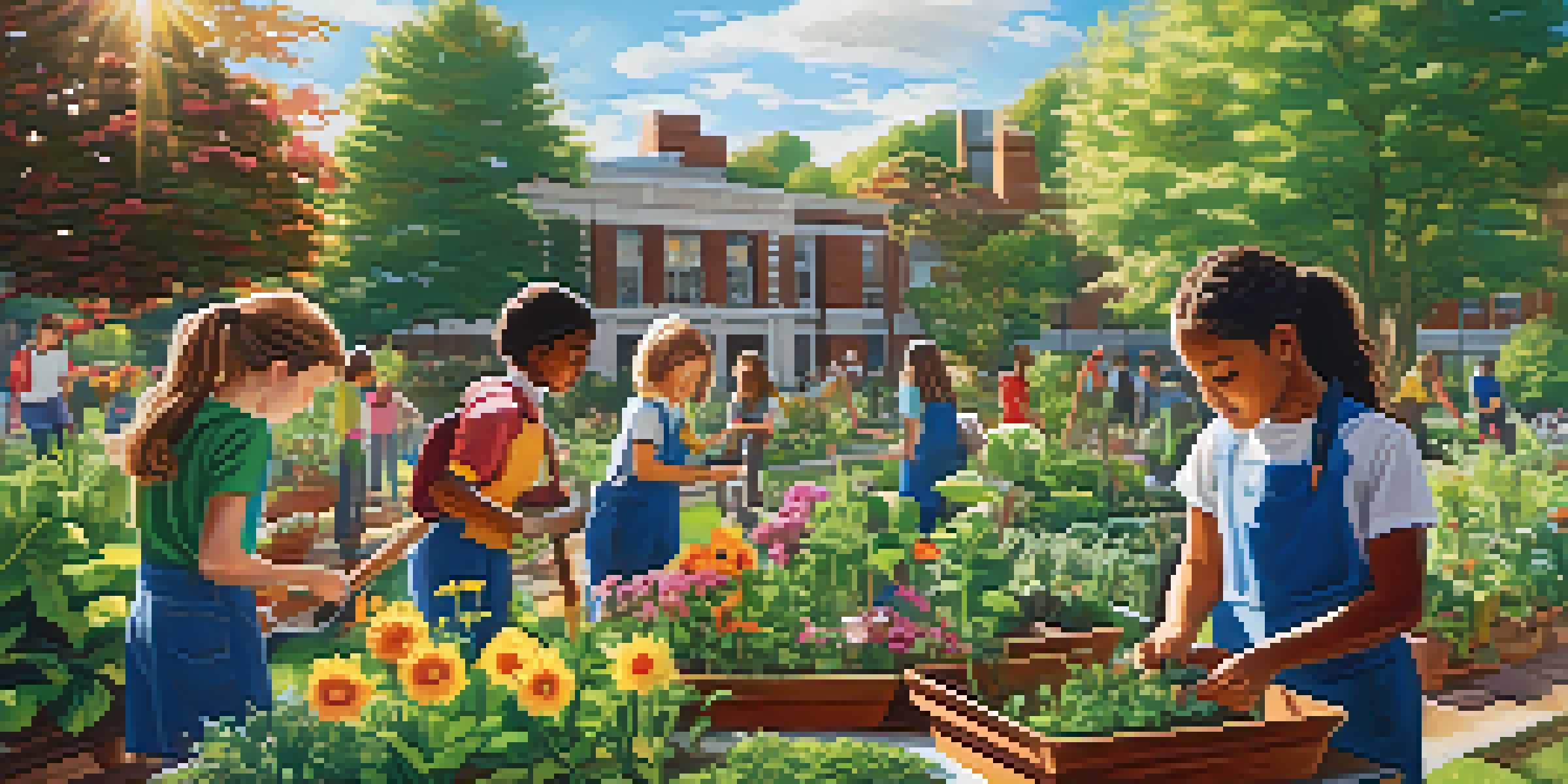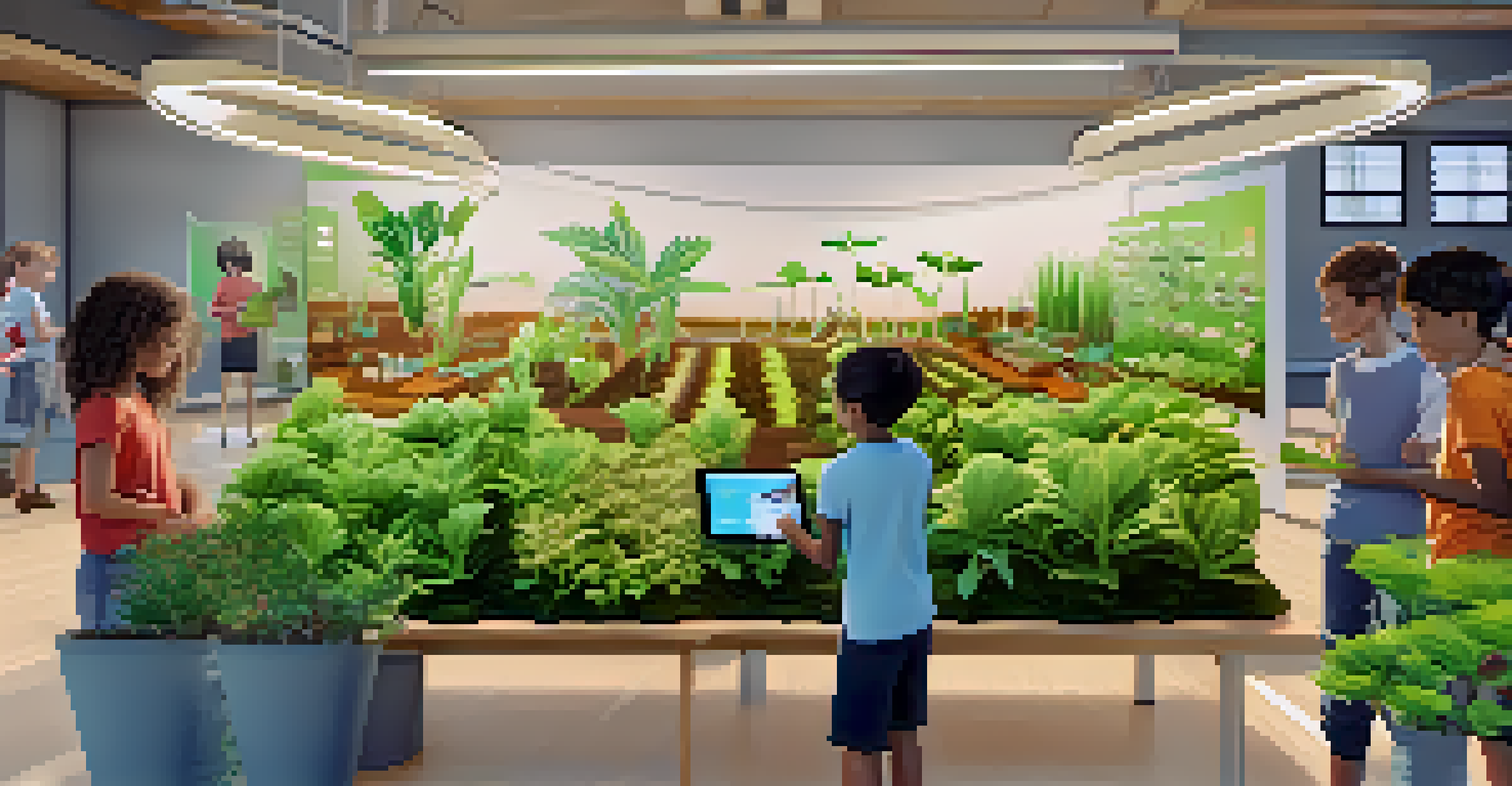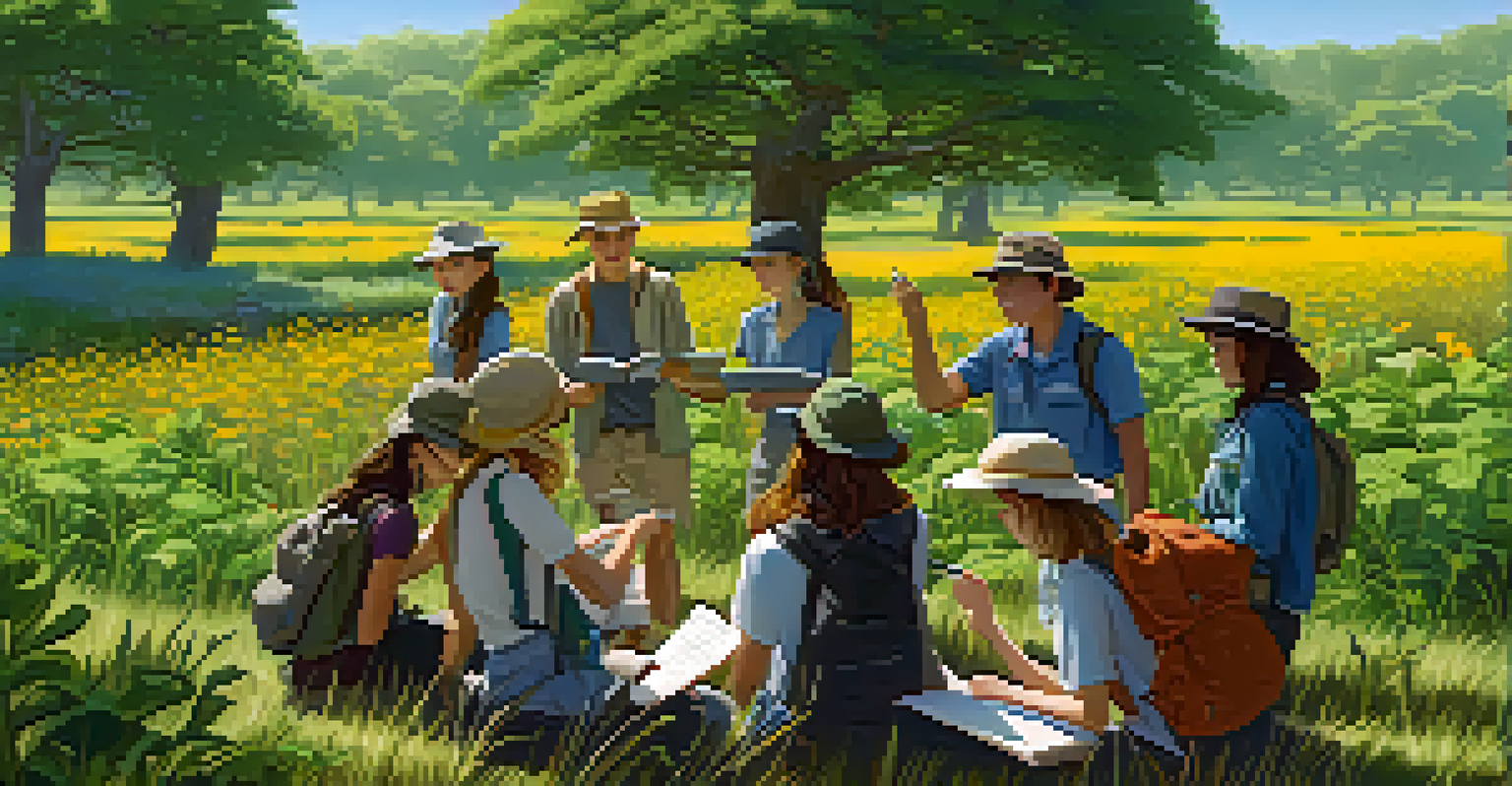The Role of Environmental Stewardship in Plant Education

Understanding Environmental Stewardship in Education
Environmental stewardship refers to the responsible management of our natural resources. In the context of education, it plays a crucial role in shaping how we teach students about plants and ecosystems. By embracing stewardship, educators can foster a sense of responsibility towards the environment among their students.
The environment is where we all meet; where we all have a mutual interest; it is the one thing all of us share.
This approach goes beyond just teaching facts; it encourages active participation in preserving the environment. For instance, students might engage in local conservation projects, planting native species that support their local ecosystem. Such hands-on experiences make learning about plants more meaningful and memorable.
Ultimately, understanding environmental stewardship empowers students. They not only learn about the importance of plants but also realize their role in protecting the environment. This foundational knowledge can inspire a lifelong commitment to sustainability.
The Impact of Hands-On Learning in Plant Education
Hands-on learning is a powerful tool in plant education, allowing students to connect theory with practice. When students get their hands dirty in a garden or participate in a habitat restoration project, they see the direct impact of their actions. This tangible experience reinforces their understanding of plant biology and ecology.

For example, a school garden can serve as an outdoor classroom where students learn about plant growth cycles, soil health, and biodiversity. As they cultivate plants, they also cultivate a deeper appreciation for nature and its complexities. This interactive approach makes the learning process engaging and fun.
Hands-On Learning Enhances Engagement
Engaging students in hands-on activities, like gardening, connects them to plant education and fosters a deeper appreciation for nature.
Moreover, hands-on activities often foster teamwork and collaboration. Students learn to work together towards common goals, such as creating a thriving garden or conducting a plant-based research project. These collaborative experiences build essential skills, preparing them for future environmental challenges.
Integrating Technology into Plant Education
In today’s digital age, integrating technology into plant education can enhance engagement and understanding. Tools like mobile apps, virtual reality, and online databases provide students with immediate access to information about various plant species and ecosystems. This technology can transform how they learn about plants and their roles in the environment.
Education is the most powerful weapon which you can use to change the world.
For instance, using augmented reality, students can visualize the growth of a plant from seed to maturity. This immersive experience not only captivates their attention but also deepens their comprehension of plant biology. Additionally, online platforms can facilitate collaborative projects with peers worldwide, broadening their perspectives.
However, it’s essential to balance technology with hands-on experiences. While digital tools can enhance learning, they should complement, rather than replace, real-world interactions with plants. Striking this balance can lead to a richer educational experience.
Promoting Biodiversity Through Education
Biodiversity is crucial for healthy ecosystems, and plant education plays a vital role in promoting it. By teaching students about various plant species and their ecological functions, educators can highlight the importance of maintaining biodiversity. This understanding can inspire students to advocate for conservation efforts in their communities.
For example, lessons about local flora can include field trips to natural habitats, allowing students to observe diverse plant life firsthand. Such experiences underscore the interconnectedness of species within ecosystems and the impact of human actions on biodiversity. Students learn that every plant, no matter how small, has a role to play.
Community Involvement Enriches Learning
Partnering with local organizations and participating in community events strengthens students' connection to their environment and reinforces their educational experiences.
Furthermore, educating students about invasive species and their effects on native plants can empower them to take action. By understanding the threats to biodiversity, students can engage in projects that promote the planting of native species and the removal of invasives. This proactive approach fosters environmental stewardship from a young age.
The Role of Community in Plant Education
Community involvement is a powerful aspect of plant education that enhances learning experiences. Local organizations, gardening clubs, and environmental groups can provide resources and expertise, enriching educational programs. Collaborating with the community fosters a deeper connection between students and their environment.
For example, partnering with a local botanical garden can offer students access to knowledgeable staff who can share insights about plant care and ecology. Such partnerships can also lead to community service opportunities, where students contribute to local conservation efforts. This involvement reinforces their learning and builds a sense of community responsibility.
Additionally, community events like plant fairs or tree-planting days provide practical applications of what students learn in the classroom. Engaging with the community not only enhances their education but also instills a sense of pride in contributing to local environmental health.
Encouraging Sustainable Practices in Plant Education
Sustainable practices are integral to effective plant education, and educators can instill these values in their students. Teaching about sustainable gardening methods, such as composting and water conservation, encourages students to consider their environmental impact. These lessons can be applied both at school and home, reinforcing sustainability as a lifestyle.
For instance, incorporating lessons on organic gardening can show students the benefits of growing plants without harmful chemicals. By understanding the importance of sustainability, students learn to make informed decisions that benefit both their health and the environment. This hands-on approach empowers them to implement these practices in their own lives.
Sustainability is Key in Education
Teaching sustainable practices in plant education empowers students to make environmentally conscious choices that benefit both their health and the planet.
Moreover, discussing the broader implications of sustainability, such as food security and climate change, can deepen their understanding of global issues. Students can recognize how their choices affect the planet and their communities, motivating them to advocate for sustainable practices. This awareness is crucial in cultivating a generation of environmentally conscious individuals.
The Future of Environmental Stewardship in Education
As we look to the future, the integration of environmental stewardship in plant education is more important than ever. With the challenges of climate change and habitat loss, equipping students with knowledge and skills to address these issues is crucial. This education can inspire future leaders who prioritize environmental health.
Innovative teaching methods, including project-based learning and interdisciplinary approaches, can enhance the effectiveness of environmental education. For example, combining science with art can lead to creative projects that highlight the beauty and importance of plants in our lives. Such integration fosters a holistic understanding of environmental stewardship.

Ultimately, the goal is to create a culture of sustainability within educational systems. By prioritizing environmental stewardship in plant education, we empower students to take action and make a positive impact. This commitment to education can lead to a more sustainable future for all.